To remove tartar from your teeth completely, you need dentists or oral hygienists. Because dentists have the tools and training to get rid of tartar from your teeth and give good advice on oral care to prevent it from returning.
Definition
Tartar — also called calculus — is made up of plaque and minerals from your saliva. Tartar can build up on teeth and attack the gum line. Tartar is a hard coating on the teeth. Because it’s porous, food and drink can easily leave tartar in your mouth.
Tartar deposits are usually yellow or brown in color and form behind or between teeth. Tartar forms when plaque remains on teeth for an extended period of time, and both can be harmful to your oral health.
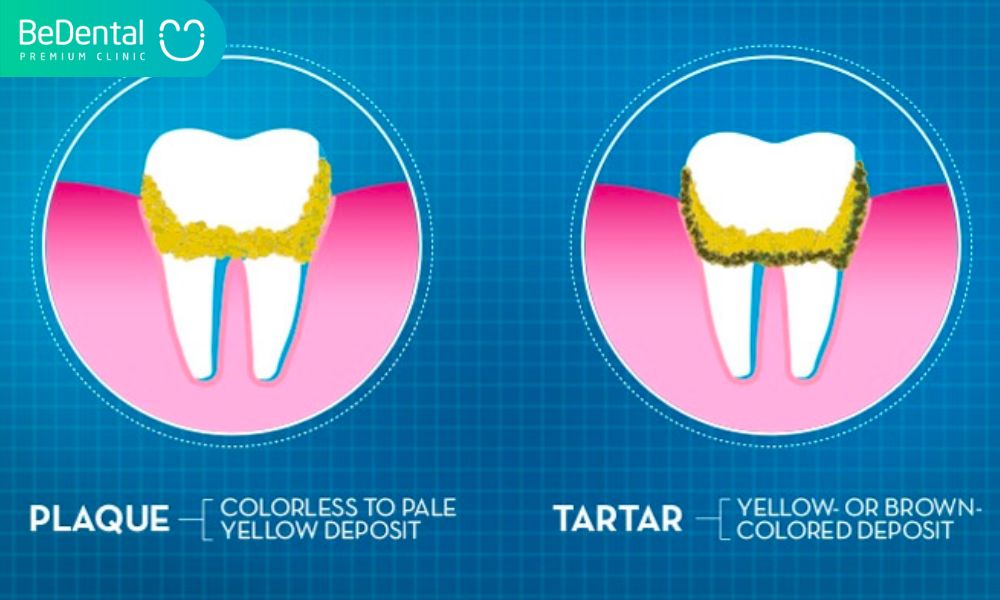
Tartar and plaque can:
- Cause bad breath, from poor oral hygiene.
- Destroy enamel, lead to tooth sensitivity, cavities, and even tooth loss.
- Increase risk of gum disease.
Dental care routine
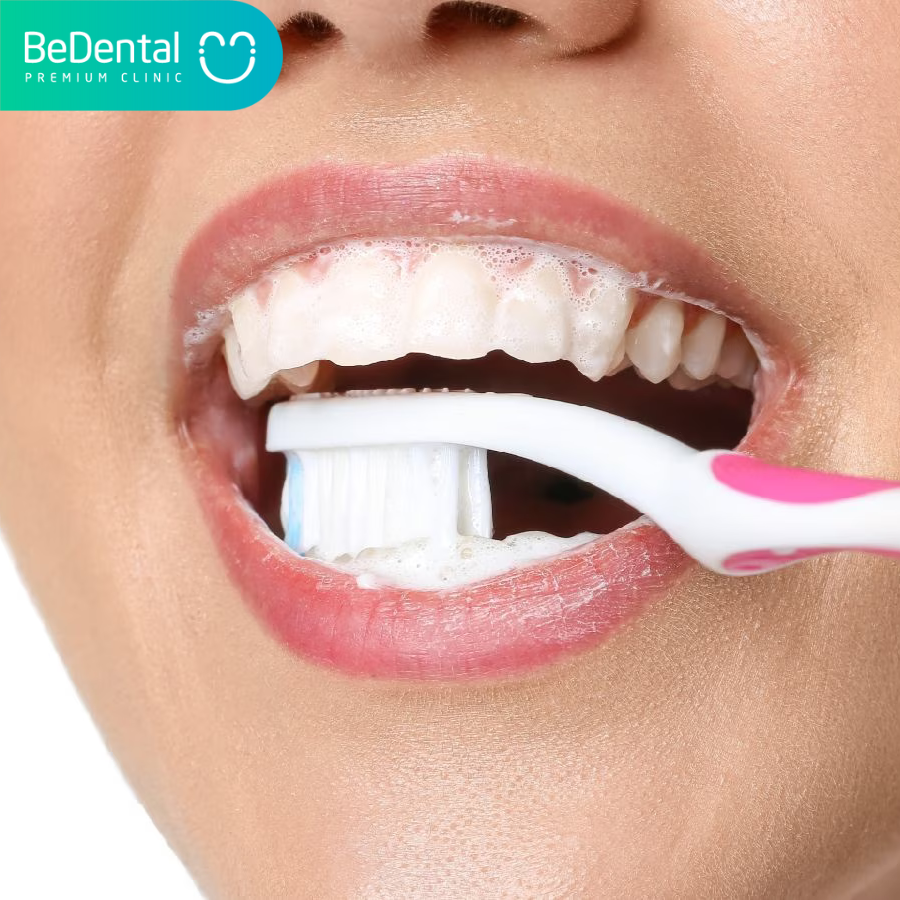
The American Dental Association (ADA) recommends the following:
- Brush at least twice a day, ideally rinse after having a meal.
- Use a comfortable toothbrush. Choosing to use a manual or an electric toothbrush depends on personal preference — both will effectively remove plaque if used correctly and regularly.
- Brush at an angle and include your gums. Angle the brush at 45 degrees so you can get bristles up into the corners between teeth and gums, where plaque can hide. Use your toothbrush on the areas where your teeth and gum line meet, too.
- Use a fluoride toothpaste.
- Floss once a day. Flossing cleans between your teeth and along your gum line to take food particles off your teeth
Prevention: 6 ways to make it tough for tartar to appear
Regular brushing and rinsing is the best prevention for calculus and plaque formation. There are some recommendations to reduce the amount of bacteria in your mouth and control tartar buildup:
- A specially formulated toothpaste
Tartar-control toothpaste. In a 2008 research comparing the efficiency between a tartar-control toothpaste and a fluoride toothpaste, it showed that using the tartar-control toothpaste had about 35% less calculus than using the fluoride toothpaste.
Toothpaste with baking soda. Studies demonstrate that toothpastes containing baking soda are more effective at removing plaque than toothpastes without it because it has a mild abrasive effect.
Skip the charcoal-based toothpastes. Charcoal-based toothpastes have not been proven to be effective at controlling calculus nor to be safe.
- Whitening strips. According to a 2009 research, those who used pyrophosphate-infused hydrogen peroxide whitening strips on a regular basis for three months had 29 percent less tartar than those who just used a toothbrush.
- Tea. Green tea may decrease the amount of bacteria in your mouth. If you don’t want to drink tea, try a mouthwash that has tea in it.
- Eating fresh fruits and vegetables. Because they promote aggressive chewing, and thus saliva production, these foods can help wash away some of the bacteria in your mouth that produce tartar. Same goes for sugar-free chewing gum.
- Water flosser. To get rid of germs and debris, the water flosser pumps trickle into the gaps between teeth. It can reduce plaque more effectively than string floss when used consistently and correctly.
- Mouthwash. The American Dental Association (ADA) claims that mouthwashes with antibacterial components such as cetylpyridinium, chlorhexidine, and certain essential oils help reduce plaque and calculus. It’s crucial to remember that these rinses should be applied along with flossing and brushing.
The advantages of removing tartar
Routine professional cleanings break off tartar buildup. Both traditional and holistic dentists (dentists who consider the overall health of the patients, not just their oral health) can do a dental cleaning. Using a hand-held metal scaler (a device with a hook-like end), your dentist or dental hygienist will remove tartar. If you have an excessive amount of calculus that has led to gum disease, your dentist may recommend a deep cleaning that involves scaling and root planing.
Plaque and calculus are removed both above and below the gum line (in the pockets where the gum has come away from the tooth). Roots of teeth are smoothed to help encourage reattachment of the gum to the tooth. In some cases a laser may be used to kill bacteria deep within a gum pocket.
The frequency of having tartar removed

The ADA now states that the frequency of dental visits should be dependent on your oral health. However, many dentists recommend having a dental cleaning and checkup every six months even when you feel your teeth are healthy. If you’re prone to plaque or tartar buildup, you’ll require more regular cleanings.
Some cases need cleanings more often include:
- Dry mouth, often comes from medications or getting older. While saliva contains bacteria, it also aids in the removal of debris.
- Lack the physical dexterity to thoroughly brush their teeth.
- Be prevented from fully understanding or completing a dental hygiene routine.
Tartar Removal and Prevention
Proper tartar removal and prevention are crucial for maintaining a healthy smile. Here are some strategies
- Professional Dental Cleanings: Regular visits to the dentist for professional cleanings are essential for tartar removal. Dental professionals use specialized tools to scrape off the hardened tartar from your teeth, leaving them clean and smooth.
- Brushing and Flossing: Maintaining good oral hygiene at home is key to preventing tartar formation. Brush your teeth at least twice a day using a soft-bristled toothbrush and fluoride toothpaste. Be sure to brush all surfaces of your teeth and along the gum line. Floss daily to remove plaque and food particles from between your teeth.
- Proper Technique: Use gentle, circular motions when brushing to effectively remove plaque and prevent its hardening into tartar. Angle your toothbrush towards the gum line to clean thoroughly. Pay attention to the back teeth and hard-to-reach areas.
- Tartar Control Toothpaste: Consider using toothpaste specifically formulated to help control tartar. These toothpastes often contain ingredients that can inhibit the build-up of tartar and may help slow its formation.
- Mouthwash: Rinse your mouth with an antimicrobial mouthwash to help kill bacteria and reduce plaque formation. Look for a mouthwash that specifically targets tartar control.
- Dental Tools: Some individuals may choose to use dental tools, such as dental scalers or picks, at home to remove visible tartar. However, it is important to exercise caution and seek guidance from a dental professional to avoid causing damage to the teeth or gums.
- Healthy Lifestyle Habits: Maintain a balanced diet and limit sugary and acidic foods, as they can contribute to plaque formation. Quit smoking, as it increases the risk of tartar build-up and gum disease.
Remember, while these strategies can help with tartar removal and prevention, it is crucial to visit your dentist regularly for professional cleanings and comprehensive oral examinations. Your dentist can assess your oral health, identify any signs of tartar or gum disease, and provide personalized recommendations for maintaining a healthy smile.
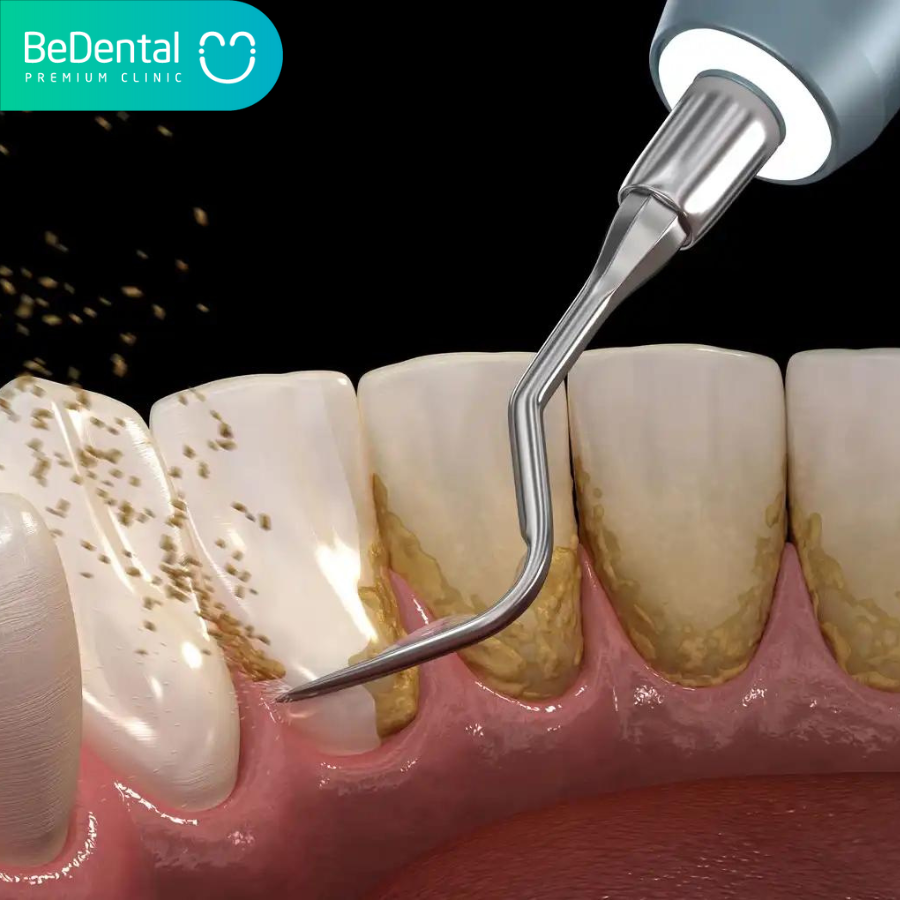
Effects of Tartar on Oral Health
Tartar, also known as dental calculus, is a hardened plaque that forms on the surface of teeth and along the gum line. It is caused by the mineralization of plaque, which is a sticky film of bacteria that develops on teeth. Tartar can have several negative effects on oral health. First, it can contribute to the development of gum disease.
The presence of tartar irritates the gums, leading to inflammation and gingivitis, which is the early stage of gum disease. If left untreated, tartar can progress to periodontitis, a more severe form of gum disease that can cause gum recession, bone loss, and even tooth loss. Tartar can also increase the risk of tooth decay and cavities.
The rough surface of tartar provides an ideal environment for bacteria to thrive, leading to the production of acids that erode tooth enamel and cause decay. Furthermore, tartar can contribute to bad breath (halitosis) and tooth sensitivity. It can also make teeth appear yellow or stained. Regular dental cleanings and good oral hygiene practices are essential to prevent the build-up of tartar and minimize its detrimental effects on oral health.
Effects of Tartar on your gums
Gum disease can result from the irritation and inflammation that calculus causes. The first stage of gum disease can have some signs, including:
- red, swollen gums
- bleeding gums when you floss or brush
- tender gums
Periodontitis can develop from gingivitis and is irreversible. Beside swollen, tender, bleeding gums, look for these symptoms:
- painful chewing
- loose teeth
- separation of gums and teeth
- pus collecting between your teeth
The bacteria can spread to the bloodstream, which increases the risk of heart and lung disease. That is why seeking dental care is crucial if you notice any of these signs. These severe effects are avoidable by brushing, flossing, and rinsing your teeth as regularly as possible.

Home Remedies for Tartar Prevention
While professional dental cleanings are the most effective way to remove tartar, there are some home remedies that can help prevent its formation. Here are a few:
- Proper Brushing Technique: Brush your teeth at least twice a day using a soft-bristled toothbrush. Use gentle, circular motions to clean all surfaces of your teeth and along the gum line.
- Flossing: Make sure to floss daily to remove plaque and food particles from between your teeth where a toothbrush can’t reach. This helps prevent the build-up of tartar.
- Mouthwash: Rinse your mouth with an antimicrobial mouthwash containing fluoride. This can help kill bacteria and reduce plaque formation.
- Oil Pulling: Swishing a tablespoon of coconut oil or sesame oil in your mouth for about 10-15 minutes, known as oil pulling, can help reduce plaque and prevent tartar build-up.
- Eat a Healthy Diet: Avoid sugary and acidic foods as they can contribute to plaque formation. Instead, focus on a balanced diet that includes fruits, vegetables, lean proteins, and whole grains.
- Chew Sugar-Free Gum: Chewing sugar-free gum stimulates saliva production, which helps wash away food particles and reduce plaque formation.
- Use Tartar Control Toothpaste: Consider using toothpaste specifically formulated to help prevent tartar build-up. These toothpastes often contain ingredients that can inhibit tartar formation.
Remember, while these home remedies can help reduce tartar formation, they are not a substitute for professional dental care. Regular dental check-ups and cleanings are essential to maintain optimal oral health and prevent the progression of tartar and gum disease.
About tartar and your teeth
700 species of bacteria are in your mouth. Plaque, a tooth-coating, colorless, sticky film, is generated by this bacterium. When bacteria-ladened plaque combines with food particles, it produces a tooth-destroying acid.
Most plaque may be removed by regularly brushing and flossing before it has a chance to seriously harm your teeth. But plaque that’s allowed to stick on teeth combines with minerals in your saliva and hardens into calculus.
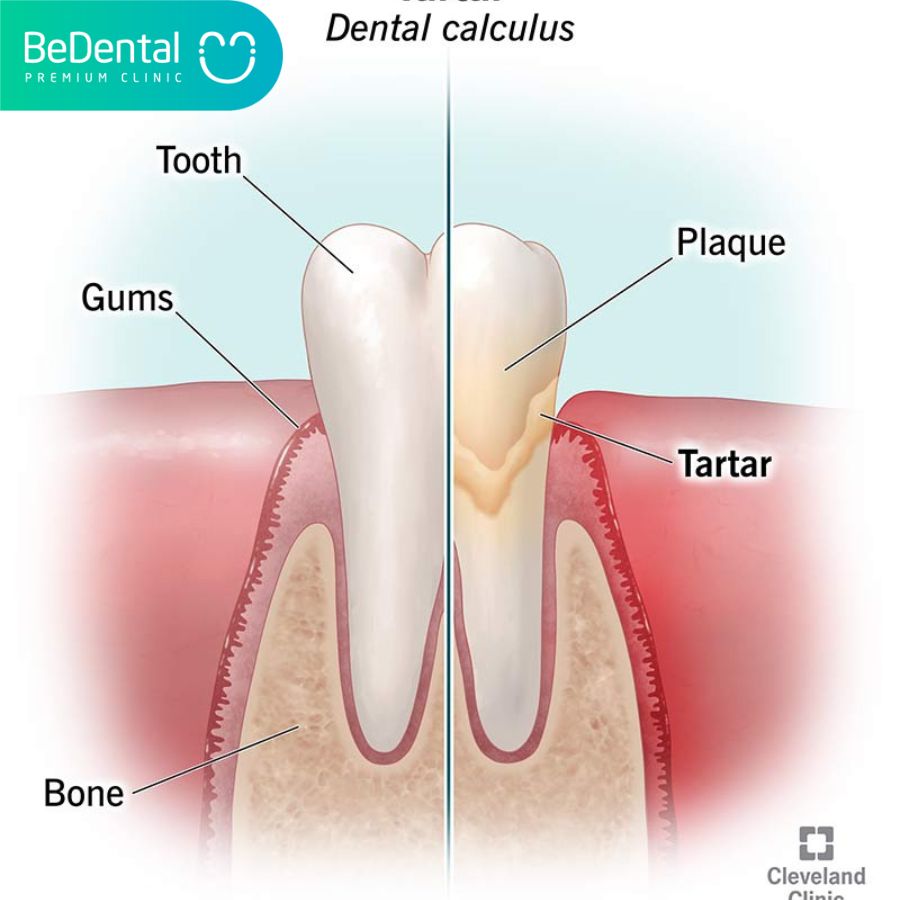
The takeaway
Although tartar buildup is common, if it’s not treated, it can significantly interfere with your daily life. Regular brushing and flossing, along with frequent dental cleanings and checkups, are the best protection against this hardened plaque or calculus.
Q&A
How is calculus removed from teeth?
Debridement is the term used to describe the elimination of calculus. An expertised dentist performs this procedure by utilizing a hand-held scaling tool or an ultrasonic equipment. The ultrasonic gadget uses water and high-frequency vibrations to remove the calculus.
Is dental calculus permanent?
Tartar, also known as dental calculus, is a deposit that develops on your teeth when plaque hardens. It is usually yellow or brown. To remove tartar from your teeth completely, you need dentists or oral hygienists. Because dentists have the tools and training to get rid of tartar from your teeth and give good advice on oral care to prevent it from returning.
Can dental calculus fall off?
Tartar will harden and calcify if it is not eliminated. If tartar separates from the back of your teeth and leaves a sharp edge, your tongue and cheek tissue may suffer damage. This hard exterior may potentially split apart or divide, allowing it to enter the bloodstream.
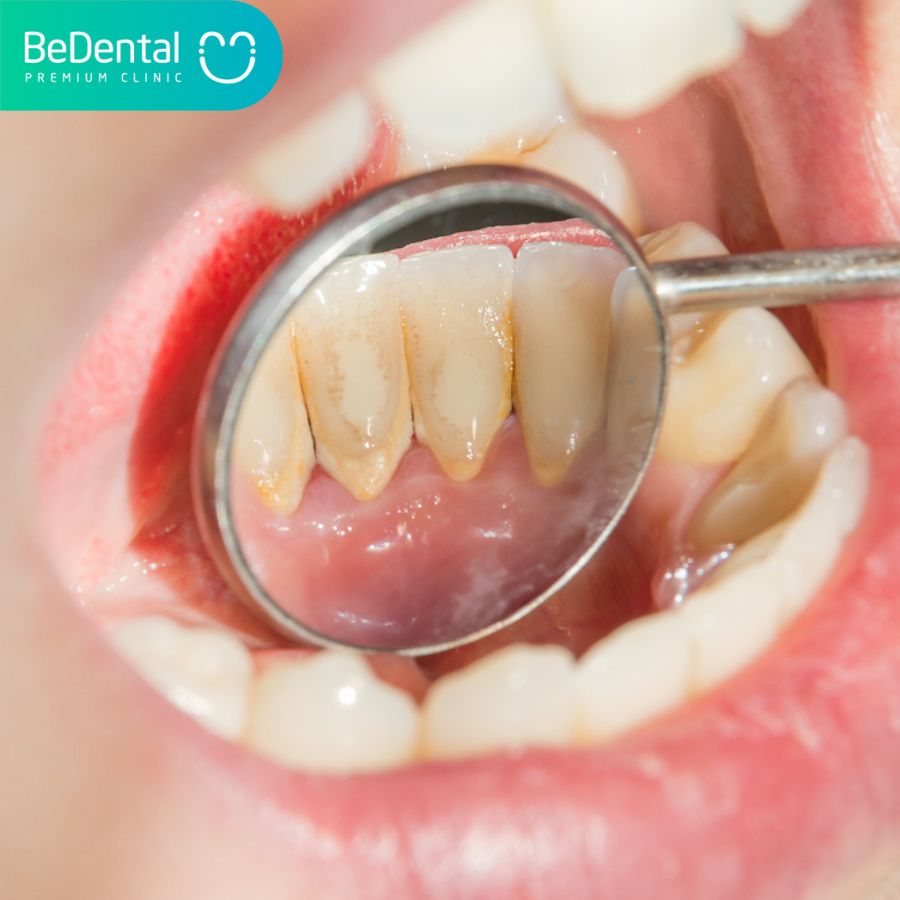
Do gums grow back after calculus removal?
Once you have lost gum tissue, it is typically impossible to get it back. It is permanently lost. However, this does not imply that there is no hope left for you. You might be able to slow the development of gum recession with the appropriate periodontal therapy.
Why is calculus so hard to remove?
Just be sure to properly brush and floss your teeth. Even your natural saliva helps to remove some types of plaque. However, if you don’t completely remove all the plaque, it quickly turns into tartar, which is difficult to remove with brushing and flossing.
Price list
| List | Time | Unit | Price |
|---|---|---|---|
| Dental Check up | 250.000 ~ 10$ |
||
| Tartar Cleaning and polishing (More detail...) | |||
| Tartar Cleaning and polishing - mild | ~15 mins | 2 jaws | 350.000 ~ 14$ |
| Tartar Cleaning and polishing - moderate | ~20 mins | 2 jaws | 450.000 ~ 18$ |
| Tartar Cleaning and polishing - heavy | ~30 mins | 2 jaws | 600.000 ~ 24$ |
| Other dental Service | |||
| Cleaning with Cacbonat sand | 15 mins | 2 jaws | 1.000.000 ~ 39$ |
| Operculectomy - Gumgivitis (Tìm hiểu thêm...) | 30 mins | 2 jaws | 2.000.000 ~ 75$ |
More
Tooth decay and 11 risk factors






Pingback: Dental Implant Care and 6 Common Concerns – Be Dental
Pingback: Bad Breath and 6 Common Questions – Be Dental
Pingback: Gum Disease and 3 Factors to Recognize Gum Disease – Be Dental
Pingback: Tooth Discoloration and 3 Types of Tooth Discoloration – Be Dental
Pingback: Teeth Whitening and 6 Noticeable Questions Should Know – Be Dental
Pingback: plaque and tartar – Be Dental